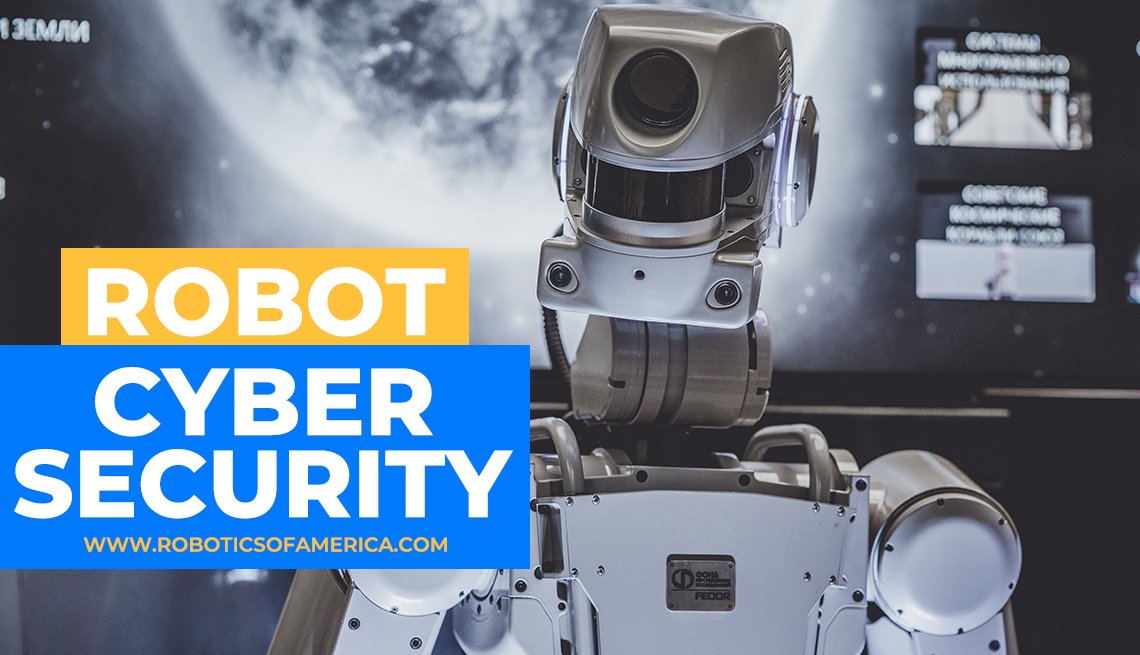
Robot Cybersecurity
Robot Cybersecurity: Protecting You & Your Bots From Threats
Robot cybersecurity matters more each year than the previous year. This is because more robotic devices are coming to the market every year. As robots get released, people are discovering privacy and authentication problems. These are two major cybersecurity risks that could harm individuals and businesses. Since robots can interact with humans in an intelligent manner, the stakes are high.
This is why it’s best to educate yourself about robotic platforms now. You do not want to wait until your data has gotten compromised. So, let’s go ahead and explore the interesting world of robot cybersecurity.
Why Are Many People Concerned About Robot Cybersecurity?
Robot components are drawing a lot of international media attention. There is much more buzz today compared to previous years. This is due to the huge growth of robotic devices that shows no signs of slowing down. Go ahead and take a gander at some of the figures. They speak for themselves. Global spending on robots will exceed well over $200 billion by 2021. US companies added over 20% more robot devices in 2018 compared to 2015.
Figures like these exemplify why cyber-physical systems have become such a hot issue. The US companies spending money do not want their investments to be all for nothing. The same applies to the average consumer who’s purchasing their first robotic device. Let’s now examine the major robotic cybersecurity threats.
The Most Common Robot Cybersecurity Threats
Below are the robot cybersecurity threats that experts get concerned about the most. As you read through them, imagine what you and your company can do to prevent these threats. After all, it’s best for companies to develop counter-cyber threat plans now. Your team can use the plans for years to come to prevent data from getting compromised or stolen.
-Robot cybersecurity threat #1: insecure communications.
To understand robot cybersecurity, let’s examine internet communication. What gets used to connect almost all robots to the internet? Wi-Fi and Bluetooth. And that’s okay. But here’s what not okay. A lot of internet traffic goes out over wireless networks in a cleartext format.
Cleartext makes it very easy for hackers to steal information. The hackers get the information that they need through cleartext stealing. They can then conduct attacks. What does this mean? Companies using robots should develop new strategies to encrypt information. The better the text encryption, the less of a chance for robot cybersecurity attacks.
-Robot cybersecurity threat #2: authentication problems.
Many robot cyber-physical systems threats get eliminated when only valid users can access the robot's control system. This means only one or two people should have a password and log-in information. This applies to all your company’s robots. After all, there’s no need to have more than one or two employees programming the bots. (Or using the robots to send commands.) But many companies are not taking cybersecurity threats with enough seriousness. This means many robots can get accessed by anyone. No log-in required. No password required. The more remote access an organization allows the bigger chance there is of a hack.
Say for instance that your current robots have an authentication process. Many hackers know how to bypass authentication without knowing the password. This means that your company should consider advanced authentication security measures. Having a password shared by a few people is not good enough. If you need help with this issue or any others in this article, contact our firm today.
-Robot cybersecurity threat #3: authorization that’s missing.
Better authorization leads to better robot cybersecurity protections. Sure, it’s great to have an effective authentication process. But that’s not good enough. A company should only assign one or two users with authorization. These are often veteran IT employees that a company trusts. Otherwise, it’s too risky. You shouldn't let many people in an organization to play around with a robot’s functionality. Your average purchased robot does not have enough authorization measures on its own. That’s why your IT team should research new measures that can get added fast.
The boosted authorization will protect all aspects of a robot’s functionality. This includes important functions like the installation of any type of application. The last thing you want is a hacker installing software on your company’s robots. Next thing you know, the hacker could have complete control over the functions of your robot. Sure, this is a situation that’s been present in many sci-fi movies. But the future is here. And your company risks having a prosperous future without proper robot authorization protocols
-Robot cybersecurity threat #4: problems with privacy.
Privacy is a very important issue when it comes to robot cybersecurity. Many robots use mobile applications to send confidential information. When this happens, private information passes through remote servers. This occurs without the user even knowing. That information includes GPS locations, device information, and mobile network data.
Why would a hacker want this information? So he or she can conduct surveillance on you or your company. Or, so the hacker can conduct tracking procedures without you or your team aware. Robots are becoming more and more complex. What does this mean? It means that robotic privacy software will also have to become more complex. Otherwise, it will be very easy to spy on almost anyone who owns a robot.
-Robot cybersecurity threat #5: poor default configurations.
Many robot cybersecurity threats focus on the default configurations of the robots. Why? The average original configuration of most robots is insecure. Well, the entire configuration isn’t in most cases. But there are certain sectors of the average configuration that are vulnerable. The problem is that it is difficult to adjust many default robotic configurations. The adjustments can only happen with someone who is an expert in robotics.
Say your company does not have an IT worker with strong robotic knowledge. Your company should then contact a third-party robotics company. That company will adjust the default configurations of your robots. In fact, this is a process that Robotics of America will help you with. Our team of experts will enhance the configurations for full protection. Sometimes a configuration change is as simple as changing the default password. But other times, a change requires expert-level knowledge of robotic systems.
Protecting Yourself & Your Company From Robot Cybersecurity Threats
It’s still the Wild West when it comes to robot cybersecurity. New threats and innovations are getting discovered all the time. But the robotics industry is beginning to understand how important cybersecurity protection is. New security measures are getting developed. They will protect you and your organization from harm’s way. But you cannot get complacent and assume that the industry will protect your robots. You've got to go out of your way to protect them.
Robot manufacturers have a limited responsibility when it comes to cybersecurity. Manufacturers focus on making robots. But it’s up to you and your staff to maintain the robots. This means that you and your team must keep cybersecurity in mind at all times. The day you take your foot off the gas is the day a hacker accesses your robot. This is why the IT team should do more than focus on purchasing security measures. They should focus on developing new security measures.
Say your company strives to improve cybersecurity measures. This means that your team cannot only focus on the robot in front of them. It must also focus on the entire robotic ecosystem. This is especially the case when it comes to controlling remote monitoring applications. Here is an example. As part of remote monitoring, every company has a web interface. That interface can get accessed by any smartphone or computer browser. This is because data is going back and forth. Your IT team has to find advanced ways to control who can access that data. Say you don't have secure data when it comes to remote monitoring. This means that information can get stolen with ease.
Managing robot cybersecurity also involves making considerations about software. Robotic software's advanced and affects many different components. For example, a robot’s machine vision cameras use the software. Its laser scanners use the software. And its end-of-arm tooling also uses the software.
What does this mean? Your team needs to ensure that software breaches will not happen. To do so requires a lot of knowledge about robotic software. That’s why you can contact Robotics of America if you need help. Our experts know how to configure a robot’s software to avoid cybersecurity threats.
Conclusion: Robot Cybersecurity is Important & Will Continue to Be
There are too many potential robot cybersecurity vulnerabilities in the world. That's why your team has to take potential threats with a lot of seriousness. The impact of these threats will increase as robots become commercial commodities. But you are not helpless.
You can go ahead and educate yourself and your team about possible security breaches. Sure, robot ecosystems have a lot of protection limitations, but you can fight back. Give Robotics of America a call right now if you are in need of cybersecurity help. Our team will get right to work and help you find fast solutions. Also, we plan to release many detailed articles about robot cybersecurity. The articles will focus on topics such as:
- -cyber-security in robotics and autonomous systems
- -robotic process automation cybersecurity
- -robotic process automation iam and cybersecurity
- -cybersecurity issues in robotics
- -RPA security framework
- -RPA security checklist
- -RPA security best practices
- -robotics security

